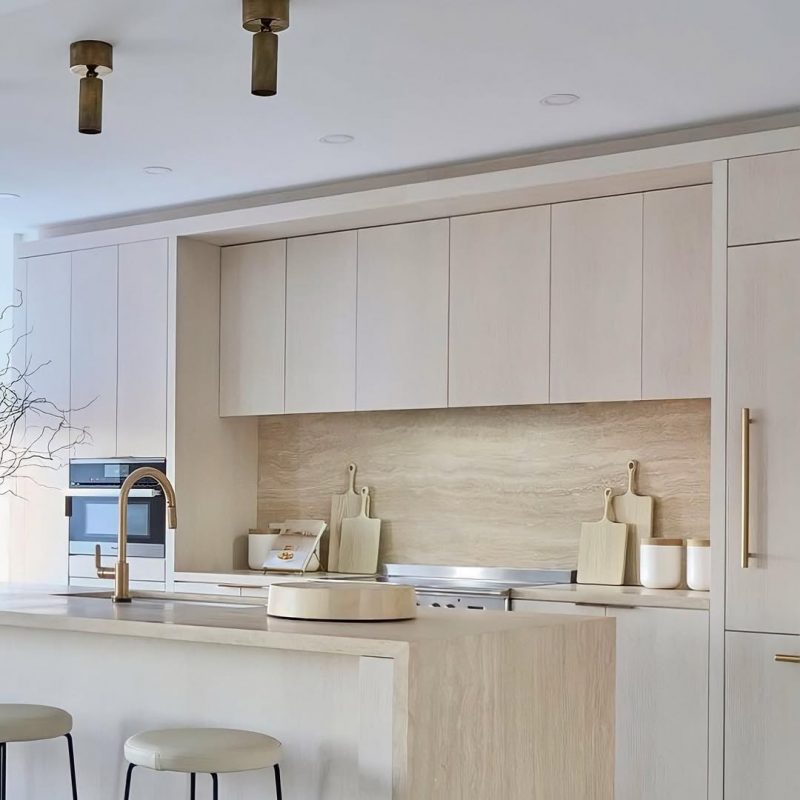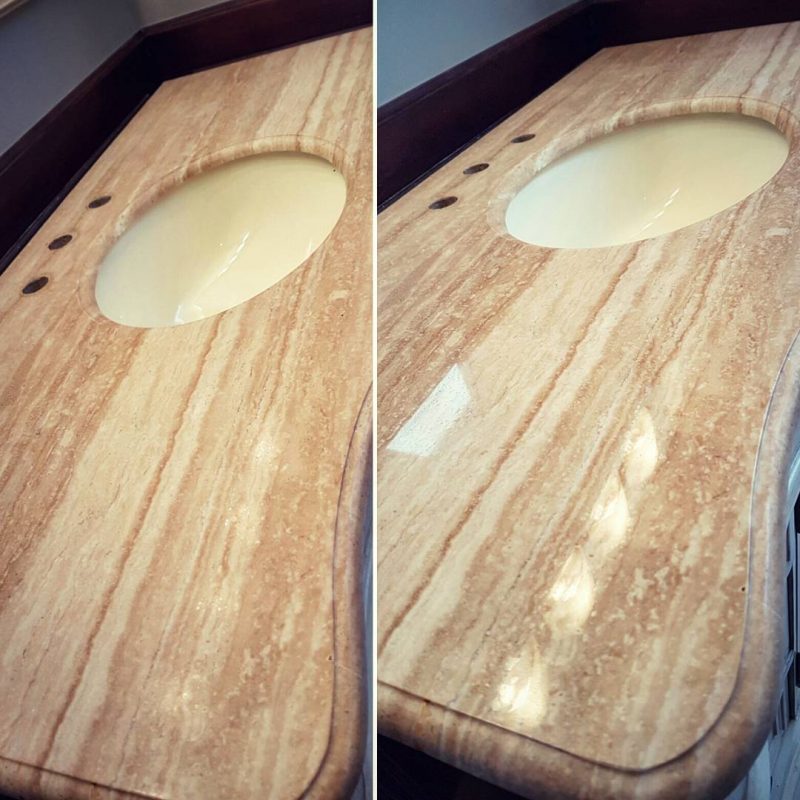Kitchen countertops are often made of travertine, a natural stone that is loved for its beauty and usefulness. Even so, before picking a material, you should know what its pros, cons, and advantages are. This article will talk about whether travertine is the best choice for your kitchen.
Why Choose Travertine for Your Kitchen?
Any kitchen would benefit from a little beauty and refinement added by Travertine counters. Their classic and sophisticated appearance comes from their distinct patterns and natural color variances. Travertine accentuates contemporary and rustic kitchen designs wonderfully in tones ranging from brown to white and wood.
Travertine is a more affordable alternative than other natural stones like granite or marble even if it still looks luxuriously. It lets house owners seem trendy and high-end without going overboard. Travertine is also heat-resistant, hence it’s a sensible option for kitchens where hot pots and pans are used often.

Pros and Cons of Travertine Countertops
Travertine countertops are a great yet pragmatic option with its grandeur, heat resistance, and fairly price. Their ecologically friendly character distinguishes them as a sustainable choice; their natural veining and warm hues provide beauty. Travertine is porous, nevertheless, so it needs frequent sealing to stop stains. It is prone to scratches and chipping; cautious handling and regular maintenance are thus essential to preserve its beauty.
Can Travertine Be Used in the Kitchen?
Travertine is a great material for kitchen counters, but it requires proper maintenance. Naturally porous, it can absorb spills—especially those involving acidic materials like vinegar or lemon juice. Avoiding damage depends much on regular surface sealing.
One more consideration is its longevity. Though travertine is used daily, it is softer than granite thus over time it may develop chips or scratches. Using cutting boards and avoiding strong impact will help you to preserve its lifetime. If you are ready to make regular maintenance investments, travertine can be a lovely and practical addition to your kitchen.
Travertine vs. Granite: Which One Is More Affordable?
Often a major consideration when deciding between granite and travertine is cost. Since travertine is less expensive than granite, generally speaking it is the more affordable choice. Granite, on the other hand, may be more expensive, particularly for uncommon or superior variants.
Still, one should also give long-term upkeep top attention. Granite is denser and more stain-resistant, hence it calls less maintenance. Though aesthetically pleasing, travertine requires regular sealing to keep it that way. Travertine is an excellent choice if your first concern is cheap upfront expenses. On the other hand, investing in granite might be a better choice if you want a surface that calls less care over time.
How to Maintain and Protect Travertine Countertops
Taking good care of marble floors is important for keeping their beauty and usefulness. Sealing things regularly is the best way to keep them from coloring and absorbing water. A good sealer should be used every six to twelve months, depending on how often it is used.
A light cleaner with no pH and a soft cloth are all you need for daily cleaning. Stay away from acidic cleaners like vinegar or solutions made with lemon because they can damage the surface. Spills should be cleaned up right away to keep things from getting stained. Trays and cutting boards can also help protect the stone from scratches and damage caused by heat.

Best Travertine Finishes for a Stylish Kitchen
There are different styles for travertine slabs, and each one looks and works better in its own way.
- Polished Finish: This finish gives the item a shiny, high-end look, but it needs more care to keep its shine.
- Honed Finish: This type of finish has a matte, smooth, but slightly porous surface, which makes it a good choice for kitchens.
- Tumbled Finish: This finish has a rough, textured look and is very slip-resistant, making it perfect for kitchens with a classic or country style.
- Brushed Finish: This gives the item a slightly worn-in look that makes it last longer and gives it more personality.
Picking the right color depends on how your kitchen is designed and how you live. A polished finish gives something a sleek, modern look. A smoothed or crushed finish, on the other hand, gives something a more natural, classic look.
Mistakes to Avoid When Choosing Travertine Countertops
If you want to get the most out of your investment in travertine for your kitchen, avoid making these common mistakes. Not protecting the stone is a big mistake because it lets dirt and water damage happen. Another common mistake is picking the wrong finish. For example, smooth marble might not be the best choice for kitchens that get a lot of use and get scratched easily.
Before buying a home, people should also know what repairs it needs. Travertine might not be the best choice for you if you want a table that doesn’t need much upkeep. Lastly, if you don’t check the stone’s quality before buying it, it might not last long, so only buy from a reliable seller.
Is Travertine a Good Investment for Your Kitchen?
Travertine counters combine cost, beauty, and utility. Although they need regular upkeep and attention, homeowners that value natural beauty would find them a worthy investment given their distinctive look and economy of expense.
Travertine is a great choice for a reasonably priced yet elegant countertop material if you’re ready to keep it correctly. But if you want a low-maintenance, very durable surface, granite or quartz might be more appropriate for your requirements.
